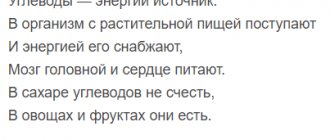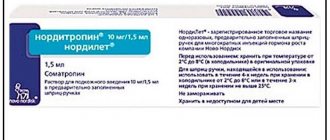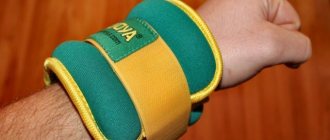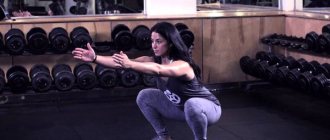Interestingly, in strength training, the lowering phase of the weight has always been considered trivial. Like, the main thing is to lift the weight. That's where the mistake was! Moreover, during the phase of lowering the weight, they usually saved energy - they lowered the weight faster. Meanwhile, this phase is the main one in any strength exercise. And it needs to be tightened longer. Lowering the weight is much more effective in terms of increasing strength, volume and overall muscle tone. In bodybuilding, this phase is called negative reps.
We'll show you the latest method of training with a partner or instructor that is most likely to get you the results you want. Someone else will lift the weight for you, and you will only lower it. We warn you in advance, you will be much more tired!
What are negative repetitions?
Many athletes know that muscles can lower more weight than they can lift. It is on this fact that the training principle of negative repetitions in bodybuilding is built. Negative training is most often used by weightlifters and powerlifters, but it is also quite common in bodybuilding. Let's look at how a bodybuilder can benefit from negative reps.
Let's start with the theory to make it easier to understand why muscles can lower more weight compared to lifting. Many believe that this is due to the body’s ability to better synchronize muscle work and connect more fibers to it in the negative phase. However, based on the results of available research, we can say that this is an incorrect assumption.
It should be recognized that there are two theories on this score that have absolutely no contradictions and it would be more correct to consider them as a single whole. So, the first theory suggests that during muscle stretching, an additional element called titin is activated. As you know, muscles work due to contractile protein compounds - myosin and actin. However, it is now also known about the presence of titin, which is involved in the work when muscles are stretched, creating additional resistance.
The second theory also relates to muscle stretching, but considers only the actin filament. During muscle contraction, actin can only combine with myosin at certain sites. In turn, when stretched, the number of these sections increases, which causes greater resistance.
#6 Lack of safety net
Error
One of the most critical mistakes during bench presses is the lack of a spotter.
, who is able to come to the rescue during a failed replay. Without a safety net, the barbell can easily land on your chest, neck, or head. It can all end in intensive care, as in the case of the monkey grip.
Solution
For safety you can use special racks
, which will prevent the barbell from falling during a failure repetition. Ideally, the racks should be wide enough so that the bar cannot miss them - this also happens.
two horizontal benches instead
. If they are too low or high, then you definitely need a belayer. Ask anyone in the room to help, tell them how many repetitions you are going to do and which of them you think might be a failure. Choose your belayer carefully so that it doesn’t turn out to be a kid who will land on you along with the barbell in case of failure.
Have you decided to perform bench presses without racks and a spotter? Here are some tips on what you can do in an emergency:
- The surest way to avoid unpleasant consequences is to quickly call someone for help
. Compared to the no-lock press or belly roll technique, this is the safest way to avoid injury. - Try to press without locks on the bar
. In case of an emergency, tilt one part of the bar so that the plates fall to the floor. After this, you can repeat the same with the other side of the brief. When dropping weights, try to hold the bar very tightly, as it can fly upward like a catapult. - If you press with locks, if it is impossible to squeeze the bar, you need to carefully lower it onto your chest and try to roll it down to your lower abdomen
, tensing your abs. Once this happens, slide your body towards the counter. The bar should be on your hips. Calmly lift your torso and transfer the barbell from your hips to the bench. Roll the barbell closer to the rack and place the bar on it using .
How to properly use negative training in bodybuilding?
Based on all of the above, we can now consider several techniques based on the training principle of negative repetitions in bodybuilding.
Method No. 1
Let's start with the method already mentioned today by Mike Mentzer. His system uses negative training in its classic form. The athlete should work with maximum weight and perform 3 to 4 repetitions. Since the weight of the sports equipment is close to the maximum, almost all motor units are involved in the work.
Literally from the first repetitions of the exercise, the load on the muscles is high and type 2A fibers will be acidified to a greater extent, and, consequently, injured. It should be recalled that this type of fiber is responsible for the strength performance of athletes.
Method No. 2
In this case, the athlete needs to use a working weight with which he is able to perform from 8 to 12 repetitions. When performing a classic set, the muscles become tired and acidic, but the approach itself is not yet completed.
The athlete needs to perform several more negative repetitions, which in this case can be called forced repetitions. It should be remembered that you will need the help of a friend. Although, if you do not perform the first repetitions to failure, then you can then work independently in the negative phase. It’s just better to reduce the number of regular repetitions to 6–10.
And the last thing you need to pay attention to when using this technique is that the eccentric phase should begin with a maximum contraction of the target muscle. To put it simply, while lifting weights, you need to contract the muscles as much as possible. This technique allows you to achieve hypertrophy of type 2B fibers.
Method No. 3
It is designed to develop type 1A endurance fibers. To do this, you need to use light working weights and perform repetitions slowly. All this will allow you to maximize the use of 1A fibers and achieve their hypertrophy.
Thus, using the techniques described above, the athlete has the opportunity to hypertrophy all three main types of muscle tissue fibers.
For more information about negative repetitions, watch this video:
Source
#8 Weight set incorrectly
Error
Sometimes athletes set the same weight on both sides of the bar, but the layout of the plates on each side is different.
. For example, on the right there are pancakes of 5, 10 and 15 kg, and on the left there are 2 pancakes of 15 kg each. It would seem that the weight on the right and left is balanced, but everything is not so simple. Due to the different set of plates, the center of gravity of the bar shifts. The load will be distributed unevenly, and performing presses will be much more difficult.
Solution
Try to hang the weights on the bar symmetrically so that the center of gravity of the bar is strictly in the center. The pancakes must be the same in weight and size and be securely fastened with locks.
Negatives [edit | edit code ]
Negative repetitions can be done without the help of a partner, lifting the weight with two hands and lowering it with one. Naturally, this mainly applies only to those exercises in which one arm is involved, such as concentrated curls with a dumbbell, curls with a dumbbell on a Scott bench, etc. The same principle applies to leg presses, leg extensions, and leg curls. In dips, you can help yourself with one leg while extending your arms.
Charles Poliquin proposed the following technique for performing negatives when training biceps (although the same principle can be used when training other muscle groups). A weight is placed on the barbell with which you can cleanly perform 4 repetitions of biceps curls. You perform these 4 repetitions, after which the weight of the barbell increases by 20%, you lift the weight with the help of a partner, and lower it yourself, preferably as slowly as possible (on the count of “eight”). Repeat again. Rest for 4-5 minutes and start the set again. In total, you can perform 3-4 such sets during training.
The meaning of the negatives is that with this technique microtrauma occurs to the muscle fibers, which stimulates them to grow. Do not use this technique systematically, otherwise adaptation will quickly occur and the benefits will sharply decrease. It is optimal to use negatives 1 time out of 5-6 workouts.
In a 2013 study by Cermak NM and Snijders T, using immunohistochemical analysis, it was shown that eccentric exercise activates and accelerates the division of type II statellite cells in muscle fibers, which is an important factor in muscle hypertrophy. [1]
Five Benefits of Eccentric Exercise[edit | edit code ]
Not everyone likes the emphasis on eccentric contractions, but this training method deserves more attention as it may be the "secret weapon" for healthy joints and a leaner body. Research shows benefits for both beginners and well-trained athletes. Eccentric muscle contractions counteract the concentric (shortening) force, preventing joint structures from being damaged (Bubbico & Kravitz 2010). This is our braking system for slowing down movement (think of gradually straightening your arms as you flex your forearms). There are five ways athletes can benefit from using eccentric contractions in their training.
1. An alternative to stretching
If an athlete loves and is passionate about stretching, they don't need to stop, but some research suggests that stretching is probably not what they think it is (Kolata, 2008). This is good news for people who hate stretching, such as some men and avid runners. Anne Tierney, one of the creators of Ki-HaraResistanceStretching, helps develop classes that incorporate stretching against resistance. Strains can cause weaknesses in the target muscles and possibly joints, tendons and ligaments (Shrier, 2005). However, if you activate a muscle in a lengthened state and resist further lengthening, you can increase the range of motion and maintain strength at the same time (Nelson & Bandy 2004). To stretch your hamstrings with resistance, place your straightened leg on a chair in front of you at a comfortable height. Instead of leaning forward toward your toes, press your foot down, squeezing your hamstrings.
2. Accelerate your strength gains
Muscles are stronger with eccentric contractions than with concentric contractions, which means you can theoretically overcome a plateau (Bubbico & Kravitz 2010). For example, if athletes cannot yet do pull-ups or push-ups, use an eccentric variation. Help them reach the final position of the pull-up and let them lower themselves. Do the same with push-ups. Ask them to slowly lower their body towards the floor or wall. Due to the fact that eccentric contractions make them stronger in concentric contractions, progress in the exercises is possible (Doanetal. 2002). If an athlete is unable to perform the full abdominal roller exercise, suggest practicing the reverse movement. Many people who are unable to perform the concentric phase with the roller can perform the eccentric phase. Knowing the ability to move eccentrically will help overcome the psychological block of a seemingly impossible exercise, and will also prepare the muscles to make a concentric movement. But this doesn't mean you need to give up concentric contractions completely. The benefits will be greater when combining types of abbreviations.
3. Joint safety and health
Have you ever had an athlete complain of knee pain after skiing or doing squats? Tierney explains that this is a sign of eccentric weakness. To maintain a squat, especially when descending a mountain, a person needs strong, long quadriceps. Make your muscles “longer” and stronger, and your joints will hurt less during such difficulties. Pilates is great for this as it involves very little static stretching. Pilates also exposes the body to stress by lengthening the muscles. If your kids are afraid to do squats because of knee pain, help them do squats safely so they can maintain mobility throughout their lives. If they can't squat, they won't be able to get up and sit in a chair or in a car. Squats are practical, focusing on the eccentric portion of the range of motion is an effective way to increase joint strength and stability.
4. Reduce the risk of injury
Some fitness experts discourage the average person from emphasizing eccentric contractions because they cause delayed onset muscle soreness (DOMS), but research shows that DOMS only occurs initially (Hackney, Engles & Gretebeck 2008). With systematic eccentric movements, people experience less soreness and even recover faster from exercise. Jules Mitchell, who has studied the effects of stretching, recommends that fitness and wellness specialists not rush to increase the load and even start with isometric contractions in the available range of motion.
Functional movements of daily living require eccentric control (think of walking down stairs or a slope). It may be that eccentric loading of the hamstrings, where the hips are flexed and the knees are straight, is beneficial, especially for runners and those who kick balls (soccer players or others). Greater eccentric strength requires less training effort, creates less cardiovascular strain and new opportunities for beginners.
5. Accelerate metabolism
If her main goal is to burn fat, she might want to focus on eccentric contractions. Research shows that it increases your metabolism for 72 hours after exercise (Hackney, Engles & Gretebeck 2008). Simply slow your lowering movements while controlling your eccentric contractions, using a 3 to 1 ratio to increase your post-workout energy expenditure. For example, when lifting weights, spend 1 second shortening the muscles and 3 seconds lengthening them.
Eccentric exercises are a great way to improve your training program, overcome plateaus, and prevent injury in certain activities. Learn more about this type of training and use it confidently in your training.
Translation by Sergei Strukov.
The effectiveness of short training
You all know that a couple of months ago we introduced a new format in the remote department - short training sessions. Why them?
| Contrary to popular belief, effective training does not mean long-term training. We were able to shorten the exercise time while increasing the intensity and maintaining the same effectiveness as a long workout. |
Here are the basic principles for building a short workout:
- the length of the main part is no more than 15-20 minutes;
- rest between approaches/work intervals should also be dynamic;
- The pulse should always be either in one mode or with elements of “explosions” (a sharp increase within the maximum permissible range).
One of the approaches we use in our short intense training is HIIT (high-intensity interval training) - which involves a combination of periods of active work performed at 80-95% of the maximum individual heart rate, and periods of “rest” - less intense ligaments, produced, as a rule, at the level of 40-50% of the maximum heart rate.
| If you decide to do a short, intense workout in this format, it is better to use metabolic (functional) exercises that involve all major muscle groups and stabilizer muscles at the same time. |
The main advantage of short workouts is that they are intense, but not exhausting, which means you have enough strength to perform all the exercises with high quality, technically, and this is the key to results.
In addition, it has been proven that after a short intense workout, the so-called “delayed training effect” - the processes of changes in the body do not stop on average for another 2 hours, that is, the body continues to change little by little even after performing the exercises.
A striking example of the use of these principles is the #sektabootcamp training. However, if you perform intense block training, as was organized within the project, then the level of strength, power and speed is maintained from several days to several weeks after completing the block.
Article from Muscle & Fitness 2012 No. 1 [edit | edit code ]
When you lift weights, your muscles contract and thereby shorten their length. However, when you slowly lower the weight, those same muscles are forced to tighten again, resisting the force of gravity. However, at the same time they stretch, i.e. lengthen! This unnatural position becomes a monstrous stress for the muscles and turns into an amazing consequence: the muscles grow much faster from negatives!
As science has established, for negative repetitions you should use a weight that exceeds the usual working weight by no less than 20%.
How can you cope with such weight alone? However, you can easily include this technique in your training arsenal.
You row with both arms and return the weight to the starting position with only one arm. Remember: negatives should only be performed in machines!
Science has found that negatives are especially effective for large muscle groups. This technique is used mainly for the pectoral muscles, back muscles and legs.
COMPLEX: NEGATIVES FOR CHEST MUSCLES
Negatives are equally suitable for both basic (hack squats, leg press) and isolation exercises (leg extensions, leg curls, standing and sitting calf raises).
Source
#3 Incorrect position of the shoulder blades
Error
Often, during bench presses, all attention is directed to the correct position of the elbows and wrists, and many simply forget about the back muscles. However, the position of the back plays a key role in distributing the load to the pecs. The shoulder blades are especially important: if you don’t bring them together during presses, you will transfer the load from your chest to your shoulders
.
It all happens as follows. If the shoulder blades do not come together, this is immediately reflected in the pectoral blades, which stop arching forward. An insufficiently arched chest during bench presses leads to a series of consequences: the trajectory of the movement increases, and the bar and forearms travel more distance per repetition. At the lowest point, a significant part of the load falls on your shoulders and you risk “breaking” them
when working with heavy weights.
Solution
How to do a bench press with a barbell correctly so that your shoulders say “thank you” to you? Before you start pressing, make sure your shoulder blades are pulled together
. Imagine that there is a pencil sandwiched between them. Try to keep your shoulder blades in this position throughout the entire set of barbell presses. At the top point, the position of the shoulder blades should not change even though it is quite difficult to keep them retracted.
Throughout the entire exercise, your pecs should be convex like lenses. Don't worry that this will shorten the trajectory. The price is only a couple of centimeters, but your shoulders will be reliably protected from overload.
The correct technique for performing negative reps in bodybuilding:
WITH POSITIVE PHASE:
WITHOUT POSITIVE PHASE:
If strength is much more important to you than impressive volumes, then in this case negative repetitions in bodybuilding are used a little differently. If you think about it this way, this option is likely to be more popular among powerlifters than bodybuilders. The essence of this technique is that you must work with negatives with a supermaximum weight (105 - 120%) in the range of 1 - 3 repetitions. I’ll say right away that this method very effectively develops the strength qualities of an athlete, but at the same time, it is very traumatic.
PS I also recommend that you allocate some of your precious time to watch this video.
Source
#7 Incorrect position of the fifth point
Error
Often many people lift their butt off the bench during bench presses. In essence, this technique is cheating, reducing the effectiveness of the exercise. Due to the elevated position of the body, the trajectory of the barbell
decreases noticeably. As a result, your pecs work at half strength.
Solution
The fifth point should fit tightly to the bench
even before starting the exercise. This position must be maintained consistently throughout the repetition, even at the highest point. At the same time, do not forget about the arch in the lower back and arched chest.
Why are negative reps needed in bodybuilding and powerlifting?
Place in the ranking of authors: out of competition
(become an author) Date: 2014-02-16 Views: 16,125 Rating:
5.0
| Before we begin the harsh practice, a little theory. During any exercise, muscles perform three types of work. 3. Inferior. When, under the influence of the gravity of the projectile, it is lowered down. It is precisely the third type of work that is key in negative repetitions. Now I will try to define this training method. From this definition it is clear that in order to effectively use negative repetitions, either the weight must be extreme (that is, you cannot do overcoming work with it), or the muscles must be tired so that, again, you cannot lift this weight. Based on this, two purposes of negative repetitions can be distinguished: |
#9 Incorrect wrist position
Error
During bench presses, gravity inevitably pulls the bar and the weight down. If the wrists are bent back, all this force will be pulled. This type of mistake will significantly increase your risk of losing weight control or suffering a wrist injury.
, which will turn you off from the training process for a long time.
Solution
The wrists need to be aligned so that they are a continuation of the forearms: the radius bone should be strictly under the bar
. If this cannot be done, it is necessary to reduce the working weight.
Increased muscle mass
This is precisely the second case described in the definition. It is used primarily in bodybuilding. And you can do most exercises with it. Here's an example. You do 30kg barbell biceps curls for 10 reps. You do the tenth repetition with all your strength. And then slowly and under control lower the barbell down for 5 to 10 seconds. You can not limit yourself to one repetition, but ask your partner to lift the barbell up for you and do several more such repetitions.
The essence of the effect is that in this way you can put more stress on the muscles. And the stronger the stress, the better your muscles respond to the load. After all, it is such extreme stress that makes them grow.
In my practice, I widely use this method in pull-ups. When a person, after the last pull-up, goes down very slowly (up to 30 seconds). This approach allows you to increase the number of pull-ups.
#10 Legs “dance”
Error
Many people, while doing a bench press, have their legs twitch as if they were being attacked by a maniac strangler. As a result, the position of the body becomes unstable
: There is a risk of falling off the bench along with the weight and “earning” a trip to the nearest hospital.
Another mistake could be incorrect placement of the feet: they are too narrow to the bench, in front of or behind the knees. In all of these cases, the support of the legs does not provide stability to the core, which makes performing presses more difficult and risky.
Solution
How to do a bench press with a barbell correctly in terms of leg position? Before you start the exercise, check your feet. Ideally, they should be exactly under the knees
– only in this position will the body be in a reliable position throughout the entire set of exercises. Also, your feet should not point perpendicular to the bench. Your toes should point in the same direction as your knees.
Some athletes use the technique of placing their feet on a bench: this option is only suitable for advanced athletes and is associated with a high risk of losing balance and ending up on the floor with the barbell.
Increased muscle strength
This is the first case described in the definition. And it is usually used in powerlifting. You can only do basic exercises this way. Let's take the bench press as an example. Let's say you can bench press a maximum of 100 kg one time. You put 115 kg on the barbell and slowly (the same 5 - 10 seconds) lower it to your chest. It's like you're resisting the weight of the barbell. Naturally, the assistants return the bar to the racks.
What is the essence of the effect here? Why are your muscles getting stronger? For those who know human physiology, there is no mystery here. The pressure that the weight of the projectile exerts on your body and your muscles causes a corresponding signal that is transmitted first to the brain and then through the motor neurons to the muscles. And the strength of muscle contraction directly depends on the strength of this signal. And the strength of the signal directly depends on how much weight is pressing on your muscles. By the word “presses” I mean the force of impact, and not in the literal sense.
And here we come to the key point. When you lift more weight than you can lift, the strength of the signal sent to your muscles is greater than ever before. And this signal causes your muscles to contract with a force that they cannot develop during overcoming work.
#11 Bar tilt
Error
A common mistake beginners make when bench pressing is tilting one side of the bar.
, as a result of which the bar is no longer parallel to the floor.
This mistake is largely due to the fact that one hand is usually more developed than the other. Also, bench presses involve the work of a large number of muscles, and coordinating their work is not so easy. Unsynchronization of movements leads to uneven lowering of the bar. It begins to fall to one side, loading the pectorals differently.
Solution
Try not to look at your right or left hand, but direct your gaze strictly in the center
. Take the bar so that your hands are at the same distance from the center: the notches will help you with this.
If the problem cannot be solved, try training with less weight and working on the tenc.
What are negative repetitions
NEGATIVE REPS – a muscle training scheme in which the main load is placed on the phase of lowering the weight.
The point of the exercise is that the trainee devotes a minimum of effort to the weight lifting phase, all concentration of attention and strength is directed to the negative phase, that is, lowering.
But still, in most cases, without a partner, a negative will be a negative, and we need a mega-negative.
The use of negatives allows you to work with extreme weights that have not been used before, due to this the muscles experience extra stress and shock, and this affects the growth of strength and muscle volume.
#2 Straight trajectory
Error
One of the most popular mistakes is the straight trajectory of the bar.
during exercise. This technique does not provide the opportunity to develop maximum strength and can injure the shoulder joint.
If the bar moves in one plane over the top of the pecs (photo on the left), at the bottom point the angle at the elbows will be exactly 90 degrees. The upper part of the shoulder will press the rotator cuff against the AC joint, which may result in shoulder pain.
, cause inflammation and in some cases result in injury.
To level the load on the shoulder joint, the bar must be lowered to the lower part of the pecs. However, a straight trajectory (shot in the middle) will also be a mistake here: it is not easy to hold the barbell at the top point above the chest
. As a result, working with heavy weight will become problematic.
Since a straight trajectory is undesirable, performing presses on a Smith machine is not recommended.
Solution
Ideally, the barbell should move strictly diagonally. At the lowest point it will be at the level of the lower pectoral muscles, and at the upper point it will be above the deltoids. This technique will give you good weight control and minimal chance of damaging your shoulder joint.
The benefits of negative repetitions
Using the negative method, the muscle fibers are greatly stretched, lifting the weight; on the contrary, they contract; due to the constant action of the “accordion” effect, the muscles are damaged, receiving micro-tears, the healing process of damaged tissues is activated, and this is mass growth.
Training with negative approaches requires more recovery time for muscle fibers, since the damage is greater than with regular training.
Do not use negativity just like that, turn it on only when the growth of the mass has stopped and complete “stagnation” has occurred.










